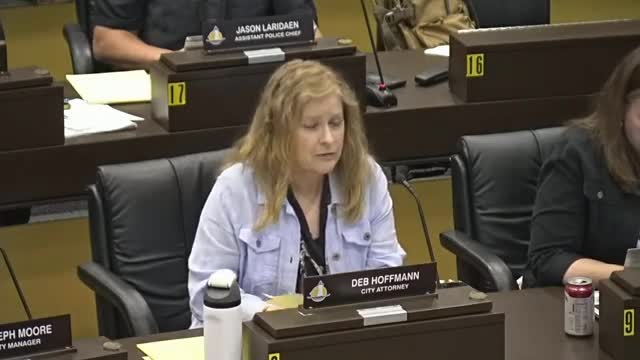City adopts new measures to tackle homelessness crisis
September 20, 2024 | Fond du Lac City, Fond du Lac County, Wisconsin
This article was created by AI summarizing key points discussed. AI makes mistakes, so for full details and context, please refer to the video of the full meeting. Please report any errors so we can fix them. Report an error »

In a recent government meeting, significant changes to local ordinances were discussed, aimed at addressing various public safety and community development issues. One of the primary changes allows the community development director and additional staff to issue citations, expanding the enforcement capabilities within the city.
The meeting highlighted the adoption of several state code violations into local law, enabling municipal prosecution for offenses such as invasion of privacy, possession of child pornography, and trespassing. This move is intended to enhance the city’s ability to deter such violations, particularly when district court options are limited.
A notable focus was placed on addressing homelessness in the community. The police chief reported a concerning rise in visible homelessness, with national statistics indicating over 650,000 individuals experiencing homelessness in 2023—a 12% increase from the previous year. Locally, nearly 5,000 individuals faced homelessness in Wisconsin this year. The chief emphasized a strategy that prioritizes outreach and supportive services over punitive measures, highlighting recent efforts to connect individuals with necessary resources.
The proposed ordinance to prohibit camping on city property was a key topic. The city aims to clarify how personal property will be handled when individuals are moved from camping sites, ensuring that valuable items are stored and that individuals are notified of their rights to reclaim them. The police department will seize items deemed as rubbish or illegal, such as drug paraphernalia or weapons.
Additionally, the police chief noted the importance of discretion in enforcement, allowing officers to assess each situation individually. This approach aims to balance public safety with compassion for those experiencing homelessness, as the city explores best practices from other communities to develop effective long-term solutions.
Overall, the meeting underscored a commitment to enhancing public safety while addressing the complexities of homelessness through a combination of enforcement and supportive community strategies.
The meeting highlighted the adoption of several state code violations into local law, enabling municipal prosecution for offenses such as invasion of privacy, possession of child pornography, and trespassing. This move is intended to enhance the city’s ability to deter such violations, particularly when district court options are limited.
A notable focus was placed on addressing homelessness in the community. The police chief reported a concerning rise in visible homelessness, with national statistics indicating over 650,000 individuals experiencing homelessness in 2023—a 12% increase from the previous year. Locally, nearly 5,000 individuals faced homelessness in Wisconsin this year. The chief emphasized a strategy that prioritizes outreach and supportive services over punitive measures, highlighting recent efforts to connect individuals with necessary resources.
The proposed ordinance to prohibit camping on city property was a key topic. The city aims to clarify how personal property will be handled when individuals are moved from camping sites, ensuring that valuable items are stored and that individuals are notified of their rights to reclaim them. The police department will seize items deemed as rubbish or illegal, such as drug paraphernalia or weapons.
Additionally, the police chief noted the importance of discretion in enforcement, allowing officers to assess each situation individually. This approach aims to balance public safety with compassion for those experiencing homelessness, as the city explores best practices from other communities to develop effective long-term solutions.
Overall, the meeting underscored a commitment to enhancing public safety while addressing the complexities of homelessness through a combination of enforcement and supportive community strategies.
View full meeting
This article is based on a recent meeting—watch the full video and explore the complete transcript for deeper insights into the discussion.
View full meeting
